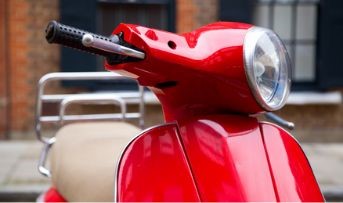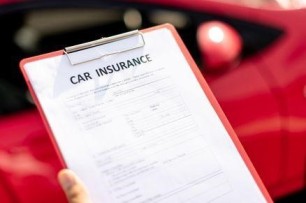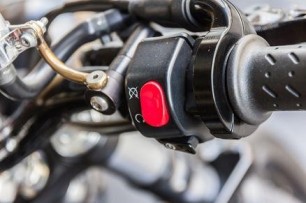General Insurance Blogs, Articles & Updates by - Magma HDI
Have us call you
- RENEW YOUR POLICY
- BUY NEW POLICY

Best features to look for when purchasing a new two-wheeler for women
Two-wheelers are the most convenient mode of transport in India. They are budget-friendly, easy to handle, and come with multiple features and various designs. This makes them a popular choice amongst Indians to travel on narrow, inadequately maintained roads with constant traffic due to poor driving etiquette.
While vehicles are no longer designed to fit the fancy of a specific gender, it is easier for women to choose the suitable model, manoeuvre it and ride on the road.
If you are a woman or even a beginner looking to buy a new two-wheeler, here are some features you should look for to find your perfect ride.
1. Budget:
It is only possible to purchase after deciding the budgeted expenditure. Keep in mind the expected utility, life of the vehicle, and additional expenses of fuel, maintenance, and insurance while fixing a budget. With the plethora of options available, it should not be difficult to find a 2-wheeler within your budget, which can range upwards from ₹50,000. However, fixed expenses like 2 wheeler insurance online and servicing are additional costs that are often overlooked.
2. Build and size:
Of the multiple brands in the market, it is challenging to differentiate between models since they are built similarly. Riding comfort is highly dependent on the size of the two-wheeler. Make sure to sit on a stationary model and check if your feet touch the ground, which is a must in situations where sudden brakes are to be applied.
3. Vehicle weight:
Choosing a two-wheeler heavier than you can handle is the worst mistake a rider can make. A test ride and a general inspection will make you aware of its weight and your capability to handle it. By ensuring you can control its weight, you can prevent accidents, put the vehicle on and take it off the centre kickstand easily.
4. Mileage:
Two-wheelers usually provide a mileage of upwards of 35 kmpl. The higher the mileage, the greater the value derived. The advertised mileage is to be considered only when driving on highways. For congested cities, most two-wheelers provide a 35-50 kmpl mileage.
5. Engine capacity:
The power of the engine or engine capacity determines the fuel efficiency and smooth running of the vehicle. Scooters with an engine capacity of 110cc to 150cc are popular for city rides or short-distance travel for women to work and visit the supermarket.
6. Storage capacity:
Unlike a car, a two-wheeler is relatively compact, providing less storage space underneath the seat. Usually, the under-seat storage accommodates a helmet and a few other things. Presently, the largest under-seat storage available is 32 litres. While no additional designated storage space exists, you may have a top storage box fitted at your back seat.
7. Auto start:
Just like automatic transmissions are preferred over manual transmissions in cars, a two-wheeler can have a kick-start or an auto-start. Auto-start is a convenient way to start the two-wheeler by engaging the brakes, accelerating, and using the auto-start button. Kick-start requires physical effort to run the vehicle and is generally not preferred. However, purchasing a two-wheeler that provides both options is best in case one of the mechanisms fails.
Considering the ease of riding a two-wheeler, it is accessible to women of all ages in different economic strata. By following traffic rules diligently and purchasing the best-suited two-wheeler along with 2 wheeler insurance online, you can ensure safe driving and fewer accidents and allied financial burdens.
Click HERE to buy 2 wheeler insurance online.
Disclaimer: The information provided above is for illustrative purposes only. To get more details, please refer to policy wordings and prospectus before purchasing a policy.

List of car insurance exclusions that you need to be aware of
Car insurance is mandatory by law for every car owner in India. Also, it provides us adequate protection against accidents and third-party cover. However, some exclusions or incidents are not covered under a standard car insurance policy. Some insurance agents might not tell you about them explicitly to sell more policies, but you need to be aware of all the essential terms and information at the time of purchase of the policy.
Let us go through some of the key exclusions.
1. Damages to tyres and electrical components:
A car insurance policy does not cover the tyres of your car. They are bound to wear and tear with regular usage and time. Also, your insurance policy will not cover any damage to your car's electrical components and wiring. These include lights, music system, central locking system, etc. Damages can occur because of mishandling, rough weather, short-circuiting, pests, rodents, etc., but you have to vent your pockets to cover these damages on your own.
2. General wear and tear:
Your car insurance policy will not cover your car's general wear and tear that happens with time, usage, and weather conditions. Hence, the policy will exclude damages such as scratches and dents, rusting of the body, etc.
3. Damages caused by man-made events such as war:
Your car insurance policy will not cover damage to your car because of man-made events such as a war. It will also exclude damages from a nuclear explosion, chemical attack, terror attack, etc.
4. Driving under the influence of alcohol:
Your insurance company would not be liable to accept your claim if you or your driver were driving under the influence of alcohol or any other toxic substance such as drugs at the time of the accident. We advise you not to drive after drinking. Instead, take a cab to your destination and stay safe.
5. Ape hangers:
Half of the bike enthusiasts consider these the most comfortable set of handlebars available in the market. For tall riders, these can be the most comfortable, while for others, if it is not set according to their height, the hands and back would go numb. These give a more upright position and eliminate the need to hunch over. These are supposedly the best handlebars in the market for long road trips.
6. Intentional damage:
Your car insurance policy will exclude any claims against damages to the car or any property caused intentionally by you.
7. Expired policy:
Always renew your car insurance policy well in time because your claim will not be passed if the accident occurs after the expiry of your policy. The insurance company will reject your claim even if you have applied for renewal, but your policy was not active at the time of the accident.
8. Oil leakage:
Your car insurance excludes damage to your engine due to leakage of oil.
9. Pledging of car:
If you have pledged your car to someone else, and the person meets with an accident, the insurance company will not pass your claim.
10. Invalid driving licence:
An insurance company does not cover you if you were driving without a valid driving license at the time of the mishap. It is recommended to have valid documents handy while driving a car.
11. National territory:
An insurance company is liable to pay for your damages only if you sustain them while driving in the national territory of India. Any damage outside India, say Nepal, will not be covered under the policy.
12. Re-appeal clause:
You have 12 months to appeal to the court if you feel that the insurance company has wrongly rejected your insurance claim. After this time period, you cannot appeal against the insurance company's rejection.
One must always be aware of the above situations under which your car insurance policy will not protect you. However, protection against some of the above incidents can be bought by buying a zero-depreciation policy instead of a regular car insurance policy.
You can also buy separate covers and add-ons such as an invoice cover, engine protector cover, etc., which will give you added protection. Always ensure that you go for the best car insurance company in India that gives you a clear picture of all the inclusions and exclusions right at the time of purchase of the policy.
Click HERE to buy insurance from the best car insurance company in India.
Disclaimer: The information provided above is for illustrative purposes only. To get more details, please refer to policy wordings and prospectus before purchasing a policy.

Did you know there exist different types of drivers? What is your type
India has a massive population of automobile owners plying their vehicles on the roads daily. Spotting people with varying personalities and driving habits is common. They exhibit different skills and traits, which can broadly divide drivers into the following six categories.
1. The learner:
Learners are drivers who are new to this experience. They have recently started to drive vehicles and are trying to be perfect at it by practicing and driving regularly. Since they are not pros at driving, they are usually submissive and try to be helpful and cooperative with other drivers on the road.
They drive slowly and carefully and may sometimes show nervousness while driving. Sometimes it can be annoying to drive behind a learner because they can brake suddenly and stop abruptly on the road. Also, they swerve their cars when changing lanes while trying to be in the right lane.
2. The distracted driver:
This is the most common type of driver in the recent era of social media and telecommunication. They try to answer every call and reply to messages they receive while driving. They tend to behave as if the world will stop if they do not answer their phones or make that call.
They display signs of anxiety and tend to check their social media feed. Many even try to record videos and click pictures while driving, putting everyone around them in danger of an accident.
3. The speeding driver:
Such drivers tend to drive their vehicles at high speeds, often above the recommended speed limit, inviting risk and increasing the possibility of accidents. They behave as if the world's end is near and they must reach their destination before it finishes.
Such drivers usually drive rashly and pose a risk to other vehicles around them. High speed means lesser control of their vehicles. Hence, one should avoid getting into a street race and let them pass quietly. Otherwise, you may risk your and your co-passengers' lives unnecessarily.
4. The violent driver:
Road rage cases have been on a high in India in recent years. They are due to drivers belonging to this category. Such drivers lose their cool on the roads due to heavy traffic and start fighting with other drivers around them.
They start driving rashly, dangerously overtaking other vehicles, and swerving their cars wildly. They can even stop abruptly, enter into brawls, and attack another driver if the situation worsens. People tend to vent their frustration on the roads, creating unnecessary chaos.
5. The honkers:
This category of drivers believes they can remove the traffic in front of their vehicle by constantly honking. Doing so adds immensely to the already high noise pollution around us.
As the traffic signal turns green, they will start honking as if the vehicle in front of them is driving slowly or stopping the traffic. Such drivers cause unnecessary nuisance and may display signs of a violent driver if you do not let them pass.
6. The Pros:
This is the best category of drivers, and you would want them to be around you while travelling. They show how good they are at driving and controlling the vehicle. They pay attention to the safety and comfort of the passengers in the car.
They are cautious and vigilant and avoid rash driving by following all traffic rules. Instead, they effectively find their way out of traffic without using useless honking or rash driving. Also, they avoid entering into altercations with other drivers and have good control over their emotions.
Like humans, car insurance also has several features and qualities and varies from company to company. They may differ in premium, coverage terms and conditions, inclusions, exclusions, etc. Hence, you should research thoroughly and buy the best car insurance policy as per your specific needs and a better return on investment.
Click HERE to buy the best car insurance for your car.
Disclaimer: The information provided above is for illustrative purposes only. To get more details, please refer to policy wordings and prospectus before purchasing a policy.

Let's understand the purpose of the kill switch in motorcycles
Road accidents continue to be the leading cause of death in India. In the metro cities, the need to ride at a blistering speed is overwhelming. In this process, you tend to slip the clutch while struggling to switch off the motorcycle. As the phrase goes, "Haste makes waste", it can't be more accurate. You not only risk jolting forward but also the likelihood of accidents is concerning.
As per the World Bank report, "India tops the world in road crash deaths and injuries. Around 11 per cent of all road crash deaths are witnessed in India, which corresponds to 53 accidents every hour; taking one life every 4 minutes".
By this point, you all must be wondering what can be an efficient way to eliminate this problem. The ideal solution is a kill switch to wind down a motorcycle.
This blog is a comprehensive guide to understanding the purpose of a kill switch.
With this emergency stop, you can rapidly turn off the bike without withdrawing your hand from the handle to reach for the key. To turn off the power, you just have to use your thumb. In short, this safety mechanism can save your life in an accident.
Turning off the motorcycle instantly seems like an unusual idea. But in general, while doing so, we put the bike’s mechanism at risk. The kill switch is designed in a way to mitigate this problem. It swiftly breaks the contact with the ignition coil. This is a very straightforward mechanism to shut the engine off. It is also convenient, considering how by keeping your hands on the handlebars, you can engage the kill switch more immediately during an emergency.
All in all, this is a simple, direct emergency shut-off switch that clicks the device off. It is an essential safety feature that enables the rider to turn off the motorcycle when it is impossible to do so manually.
All you have to do is press the red button. If you're a new rider, you probably spotted a scarylooking red switch on your bike's right-side handlebar. So, you now know how a kill switch looks.
In a heavier bike, the rumbling engine is silenced with this mechanism's help. It also aids in handling emergency situations without disturbing the bike's stability. You won't need to glance down to find it because it will be easy to operate after some experience. It is also a quick method to halt your bike for a brief period, to give directions, or in traffic.
Numerous motorcycles are designing advanced technologies to eliminate road accidents. While this is one way to make you feel secure, you should consider other options. In India, it is almost necessary to take insurance for your motorcycle. If it expires, you can apply for an online motor insurance renewal. It is another way to drive safely without worrying about financial losses against insured vehicles, including extensive damages and liabilities. Always keep your insurance policy up-to-date to avoid it from lapsing.
We hope the above information explains the importance of kill switch and online motor insurance renewal. It is always best to have complete knowledge about your vehicle, its parts and their use. This information can help you better understand your bike and stay protected during unfortunate events.
Click HERE to get online motor insurance renewal.
Disclaimer: The information provided above is for illustrative purposes only. To get more details, please refer to policy wordings and prospectus before purchasing a policy.


